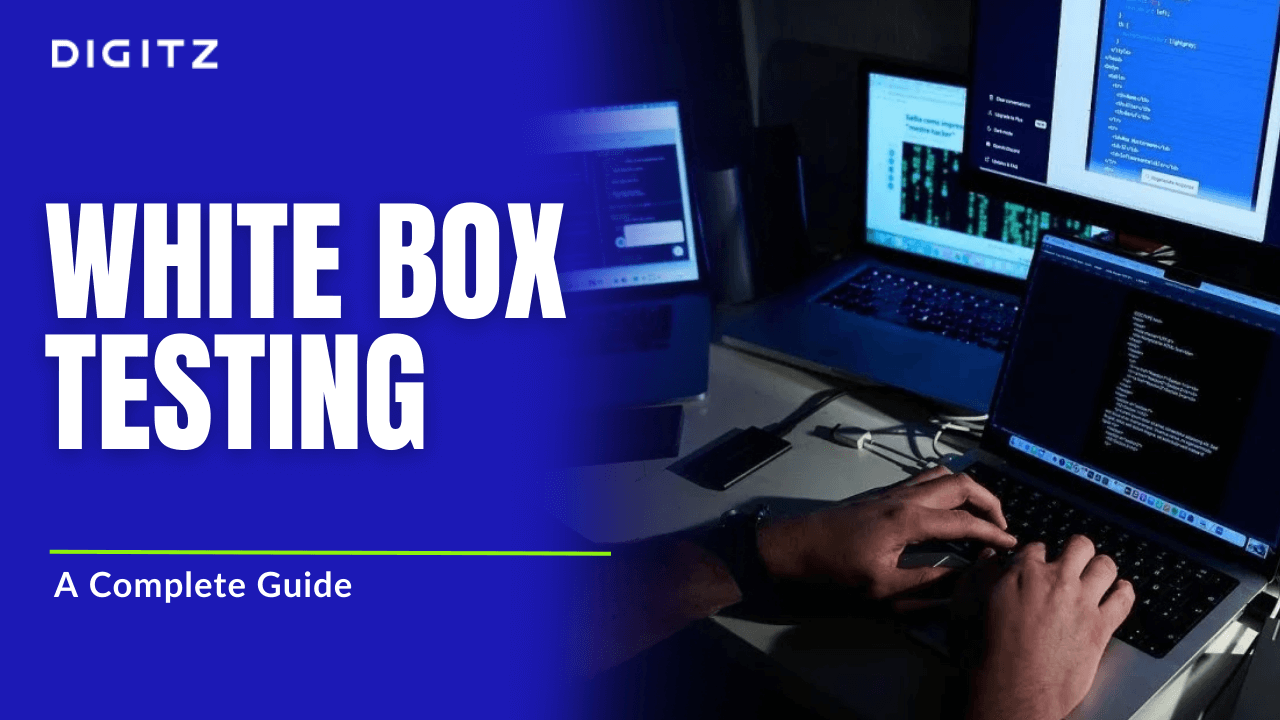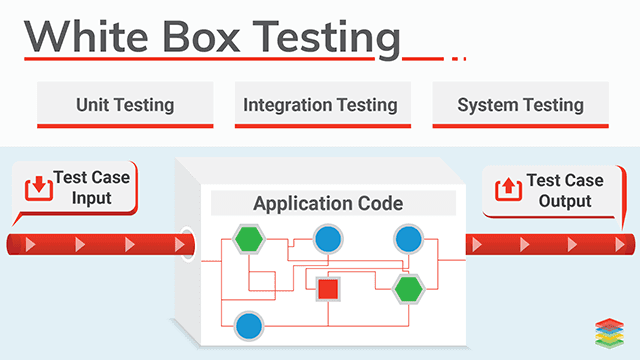What is White Box Testing? (Example, Types, & Techniques)

In the realm of software testing, ensuring code quality and stability is paramount. White Box Testing is one of the core testing methodologies used to verify the internal structures and workings of a program. Unlike Black Box Testing, where the tester is unaware of the internal code or architecture, White Box Testing offers a more granular approach by examining code logic, data flow, and system architecture. This methodology helps identify bugs and optimization opportunities early in the development cycle, ensuring that the application behaves as intended under different conditions.
This blog will explore White Box Testing in detail, covering its definition, types, techniques, examples, and the advantages it brings to the testing process.
What is White Box Testing?

White Box Testing, also known as Clear Box Testing, Open Box Testing, Glass Box Testing, or Structural Testing, is a software testing technique that evaluates the internal structure and design of a program. In this testing approach, the tester has complete visibility of the code, allowing them to test the application at the code level. The objective is to verify the flow of inputs and outputs through the program, scrutinize the code for potential errors, and ensure the correct implementation of every function and operation.
In White Box Testing, the tester often requires programming skills and a deep understanding of the software’s internal mechanisms. It is typically carried out at the unit, integration, and system levels of the software development lifecycle (SDLC).
Why Use White Box Testing?
White Box Testing is essential because it ensures that the internal operations of an application meet specified requirements and that the code structure is robust, secure, and efficient. It can detect errors that might be missed by Black Box Testing, such as security vulnerabilities, logical errors, and poor coding practices.
Example of White Box Testing
Imagine a login functionality for a web application. In Black Box Testing, the tester would input a username and password to verify whether the login process succeeds. In White Box Testing, however, the tester would examine the code structure of the login function itself. They would analyze how the input data (username and password) is being processed, whether there are logical errors in the function, or if there are security loopholes such as SQL Injection vulnerabilities.
Types of White Box Testing
1. Unit Testing
Unit Testing involves testing individual functions, classes, or methods in isolation to verify their correctness. The objective is to ensure that each unit of code performs as expected. Typically, developers perform Unit Testing, and it forms the foundation for White Box Testing.
2. Integration Testing
Integration Testing focuses on verifying the interactions between multiple units or components of the software. It ensures that different parts of the system work together harmoniously and that data flows correctly across modules.
3. Static Code Analysis
Static Code Analysis involves reviewing the code without executing it. Tools like SonarQube, Checkstyle, and PMD are often used to scan the codebase for security vulnerabilities, code smells, and potential bugs.
4. Dynamic Code Analysis
Dynamic Code Analysis involves testing the code during runtime. It identifies issues such as memory leaks, performance bottlenecks, and concurrency issues.
5. Statement Coverage Testing
Statement Coverage Testing aims to execute all the statements in the code at least once. This ensures that every line of code has been tested and that no code remains unexecuted.
6. Branch Coverage Testing
Branch Coverage Testing focuses on testing all the possible branches or paths in the code. This ensures that all the if, else, while, for, and switch-case branches are executed and evaluated for correctness.
Techniques Used in White Box Testing
1. Control Flow Testing
Control Flow Testing evaluates the logical flow of the application through its control structures. The tester analyzes loops, branches, and conditionals in the code to ensure that every possible path is tested.
2. Data Flow Testing
Data Flow Testing focuses on the lifecycle of variables and data within the application. It ensures that variables are correctly defined, used, and terminated, helping detect anomalies like undefined variables or data being used without initialization.
3. Path Testing
Path Testing involves identifying all possible paths through the application and testing them to ensure every path produces the correct output. This technique ensures maximum code coverage, detecting errors in complex control structures.
4. Loop Testing
Loop Testing focuses on validating loops within the program. It ensures that loops perform correctly, handle boundary conditions, and terminate as expected.
5. Mutation Testing
Mutation Testing involves making small changes (mutations) to the code and testing the modified code to check if the test cases can detect the changes. This ensures that the test suite is robust and capable of identifying subtle bugs.
White Box Testing Tools
To effectively perform White Box Testing, several tools are available that help automate testing, analyze code, and identify potential issues. Some popular White Box Testing tools include:
- JUnit: For unit testing in Java applications.
- SonarQube: For static code analysis and bug detection.
- Cobertura: For code coverage analysis in Java.
- TestNG: A testing framework inspired by JUnit, used for testing complex codebases.
- Emma: A tool for measuring and reporting Java code coverage.
Advantages of White Box Testing
- In-Depth Code Analysis: White Box Testing allows testers to analyze the internal code structure, logic, and architecture, resulting in thorough testing coverage.
- Early Bug Detection: Bugs can be identified at an early stage, reducing the cost of fixing them later in the development cycle.
- Optimized Code: White Box Testing often highlights areas for code optimization, resulting in more efficient and maintainable software.
- Security Assessment: It can help uncover security vulnerabilities like unhandled exceptions, SQL Injection, and buffer overflows.
- Better Code Quality: White Box Testing ensures that all code paths, decision points, and data flows are tested, leading to improved code quality.
Disadvantages of White Box Testing
- Requires Programming Knowledge: Testers must have a strong understanding of the programming language and code architecture.
- Time-Consuming: White Box Testing can be more time-consuming than Black Box Testing due to the in-depth analysis required.
- Maintenance Overhead: Test cases may need to be updated frequently as the code evolves.
Final Thoughts
White Box Testing is a powerful approach to ensuring that the internal operations of a software application are functioning correctly. While it requires significant expertise and time, its benefits far outweigh the costs, particularly for mission-critical applications where code quality and stability are non-negotiable.
By implementing various White Box Testing techniques and using the right tools, development teams can detect errors early, optimize their code, and deliver high-quality software that meets user expectations.
UAE
Dubai Silicon Oasis, P.O. BOX: 6009, Dubai, UAE
Phone: +971 (54) 745-9146CANADA
1738 The Pines Mississauga, Ontario Canada L5J 4V5
Phone: +1 (705) 930-6536